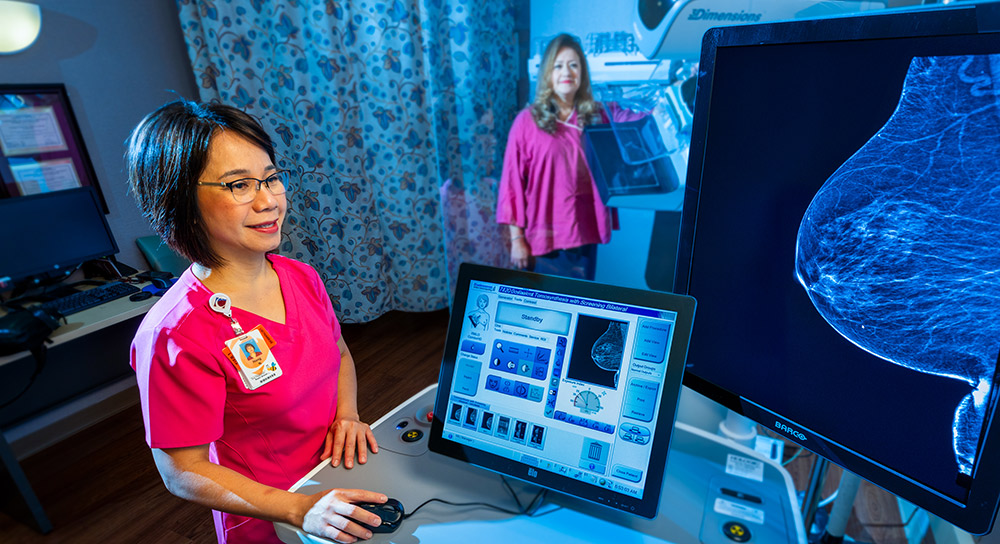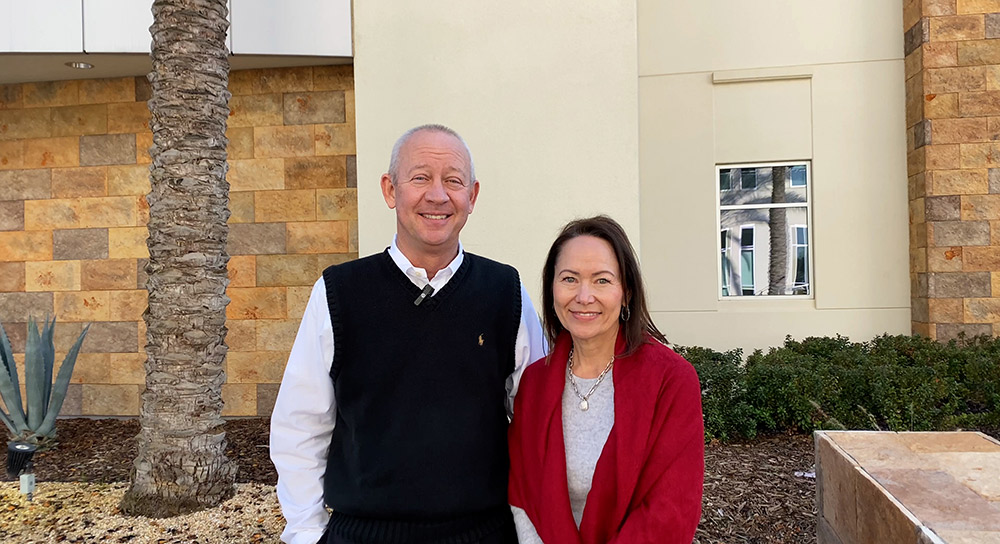 Community Medical Imaging diagnostic radiologists Susan Barrows and Judy Champaign answer questions about new recommendations from the U.S. Preventative Service Task Force on mammograms. In November, the federally-funded group of doctors updated their guidelines saying women could wait until age 50 for routine breast screenings and then have mammograms every two years instead of annually. The new recommendations were controversial, especially among breast cancer survivors and those who treat breast cancer.
Community Medical Imaging diagnostic radiologists Susan Barrows and Judy Champaign answer questions about new recommendations from the U.S. Preventative Service Task Force on mammograms. In November, the federally-funded group of doctors updated their guidelines saying women could wait until age 50 for routine breast screenings and then have mammograms every two years instead of annually. The new recommendations were controversial, especially among breast cancer survivors and those who treat breast cancer.
In light of the recent recommendations by the U.S. Preventive Services Task Force to delay mammograms and space them further apart, have you changed your advice to patients?
Dr. Susan Barrows: No, and we’ve got lots of company. Multiple professional societies such as the American College of Radiology, the American Cancer Society, the American College of Obstetrics and Gynecology and the Society for Breast Imaging are opposed to the new guidelines. In addition, prestigious hospitals like the Mayo Clinic and M.D. Anderson are also ignoring the new guidelines.
Dr. Judy Champaign: The federally-funded USPSTF created enormous controversy with the release of their analysis of old data. Different models were used that seemed to have cost at the heart. The coincidental release of the report at the peak of debate about health care reform added to the furor, which led many to question whether the recommendations were rooted in politics or science. So many medical reports that land on the front page or television news fade away in a few weeks. Not so with this one.
Since 1990, the mortality rate from breast cancer in the U.S. has decreased by 30%. This is important for two reasons. The rate had been stable for the previous 50 years. In 1987, the American College of Radiology started its program to improve the quality of mammography and mammography use began to increase. The task force did not deny this benefit from mammography, but because 1,900 women in the 40-49 [age] range have to be screened to find one cancer, compared to 1,000 women over [age] 50, they deemed it too expensive.
As a breast imaging specialist, woman and mother, I find this outrageous. No new science has driven the recommendations. To tell a woman in her 40s to wait until she has symptoms of breast cancer to have a mammogram is a sad missed opportunity to potentially save a woman in her most productive years. If universally adopted, these guidelines could dial back the progress made over the past 20 years.
Women of all ages are always more important to their families than to uninvolved statisticians. I continue to recommend the well-established guidelines of the American Cancer Society for screening mammography.
When should women get routine mammograms?
Dr. Champaign: For most women, a baseline exam at age 35 followed by annual screening starting at age 40. The American Cancer Society recommends yearly screening mammograms for average risk women beginning at age 40. They do not place an upper age limit, but instead recommend a woman continue with mammography if she is otherwise healthy. Most women — 80 to 85%of women — are of average risk. For those women at high risk because of genetic predisposition, there are alternative screening strategies that are based on consensus of experts.
Why are mammograms essential?
Dr. Champaign: Mammography has a proven track record in reducing breast cancer mortality which has not yet been established for ultrasound, MRI, clinical breast exam or any other test. While it is not perfect in locating every cancer, it can detect cancers in their earliest period of growth when the chances of cure are the best. Waiting for a cancer to become evident as a symptom can be the difference between finding a cancer that is still within the milk duct to one that is spread outside the duct and potentially outside the breast.
What’s the difference, for a patient/doctor, between different kinds of mammogram technology?
Dr. Barrows: Digital mammography is the best technology and Community Medical Centers is an all-digital mammography hospital system. Digital mammography has better detail and greater accuracy than film screen mammography. It is more comfortable for the patient. Radiologists love it because the images are better and it is more convenient because we can always get the prior exams. With digital technology, we can apply computer-aided detection or CAD which has a computer “interpret” the mammogram with the doctor. This CAD program has been shown to improve our detection of early stage breast cancers. [Editor’s Note: Images are stored digitally and more easily accessed by computer than old X-ray films that had to be ordered and pulled from file rooms.]
Dr. Champaign: Digital mammography has been an important development. It performs better in women who are younger, premenopausal or have dense breasts. This covers about 65% of the women screened. The breast cancer mortality reduction studies were from old film technique mammography which performed well. I would anticipate even better results with digital mammography.
Is there a risk from getting too many mammograms?
Dr. Champaign: The radiation exposure from digital mammograms is less than film examinations and our goal is always to keep radiation exposure at the lowest possible dose. It is difficult to tell the difference between the rare cancer induced by radiation and any other cancer. The risk is felt to be low enough to be offset by the benefits of early detection.
Dr. Barrows: Women worry that the compression of the exam may cause breast cancer but that’s just not true. The breast is more sensitive to the harmful effects of radiation when the patient is younger and so that is one of the reasons why mammography is not done as a screening exam in young patients. This sensitivity to radiation becomes less significant with age.
Why do you think some women avoid getting mammograms?
Dr. Champaign: Women avoid mammograms for many reasons. Fear/anxiety can be for the test itself which can be perceived as intrusive or uncomfortable to the fear of the results. Loss of control is an issue for some. Hectic, busy lives can get in the way of taking care of ourselves. Financial concerns can cause women to postpone their care. The causes are as varied as women themselves.
Dr. Barrows: I think many women are concerned that it will hurt but with the new digital technology, the machine has a flexible upper plate and this is much more comfortable for the patient. Also, the time in compression is less because digital exams are faster and the exams take a lot less time. I think patients are always worried that there will be something bad but the overwhelming majority of patients get good news. I tell patients to remember their annual exam by a certain holiday or special occasion so that when that date comes around every year they will be reminded that it is time to get their mammogram. Of course, it never hurts to go with a friend and have lunch together afterwards.
This story was reported by Erin Kennedy. She can be reached at MedWatchToday@communitymedical.org



_5.jpg)


